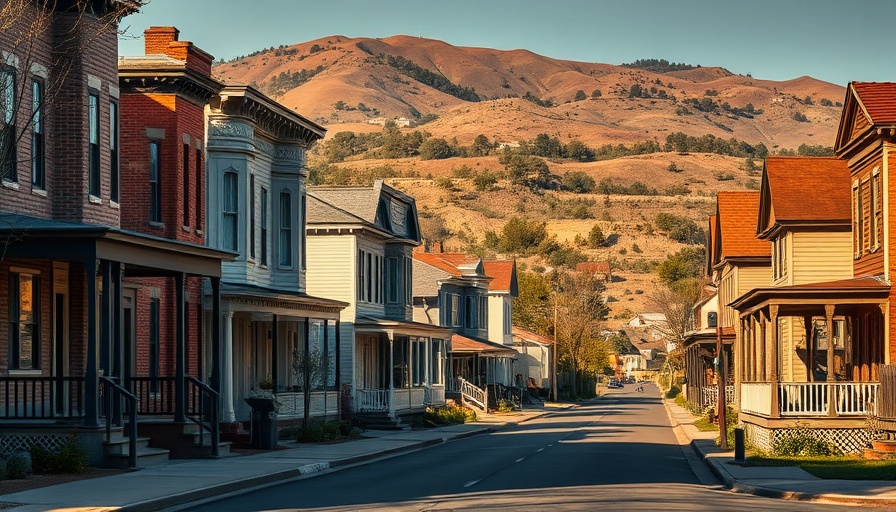
Understanding America's Aging Homes Crisis
In the United States, old houses are neither a novelty nor a charming historical relic; they symbolize a critical crisis in America's housing market. When you think of the oldest homes, the nostalgic warmth of original hardwood floors or exposed brick might cross your mind. Yet, the reality is stark: a growing number of these aged dwellings is contributing to a national housing shortage that finally seems to have caught the nation’s attention.
The Rising Age of the American Home
As of 2022, the typical age of an American home had risen to 41 years from 35 years just a decade earlier. This dramatic shift isn’t merely a statistic; it reveals a significant gap in new construction efforts and reflects how America’s housing landscape has stagnated. Only about 9% of homes in the U.S. were built in the 2010s, which starkly contrasts with the 11% constructed before 1940.
Comparing Housing Trends Across Regions
What exacerbates this issue is the differences in aging rates across various regions. The Sun Belt cities such as Austin showcase a starkly different real estate landscape compared to the Midwest. In fact, over 20% of homes in Austin were built in the 2010s, while only 4% of homes in cities like Milwaukee fall into this bracket. This discrepancy shapes local housing markets significantly; more homes mean lower prices in areas with extensive construction, while less inventory drives up costs in others.
The Impact on Housing Affordability
With these trends at play, the concern over escalating housing prices becomes increasingly urgent. Years of building limited new homes have spurred a steep increase in costs, which often leaves prospective buyers in a lurch. Economic uncertainties have also led many to hesitate in entering the housing market, complicating the quest for affordable housing further.
Why New Construction Is Essential
As the market grapples with the implications of aging homes, the call for more new construction grows louder. To address the burgeoning housing shortage and stabilize prices, the construction of new homes must become a priority. Without fulfilling this imminent need, the landscape of homeownership will benefit an elite few while the rest are pushed further into precarious rental situations or forced to contend with a lackluster real estate market.
What This Means for Future Homebuyers
For potential buyers, navigating today's real estate market can seem daunting, especially when juxtaposed against these challenges. The disparity between regions offers an insight into where opportunities may lie for home purchases or investments. Techniques for house hunting, whether one is searching for houses for sale or considering rental properties, become crucial in this environment. Websites like Redfin, Zillow, and Trulia can serve as invaluable tools for conducting thorough market research.
Exploring Alternatives in Housing
The rise of old homes often brings up another thought: the balance between preservation and practicality. People love historical homes for their character and stories each wall tells, yet new solutions must address the realities of modern living. Investors and real estate agents increasingly look for opportunities in renovation and restoration projects, explaining why certain neighborhoods are buzzing with activity.
Conclusion: Staring Down the Barrel of a Housing Crisis
The trajectory of America’s aging homes presents a mixed bag of nostalgia and urgency. While these houses carry with them a wealth of stories, it is vital to focus on the pressing housing crisis at hand and advocate for the development of new homes that meet today’s needs. As a generation grapples with student debt, high rents, and economic fluctuation, younger buyers have a daunting task ahead. However, with the right knowledge and resources, navigating this evolving landscape can lead to opportunities for investment and homeownership.
Call to Action: Take Steps in Your House-Hunting Journey!
If you are contemplating entering the real estate market, it’s time to explore your options! Whether it be houses for rent or apartments for sale, don't hesitate to consult a qualified real estate agent who can guide you through these complexities of today's housing market.
 Add Row
Add Row  Add
Add 



Write A Comment